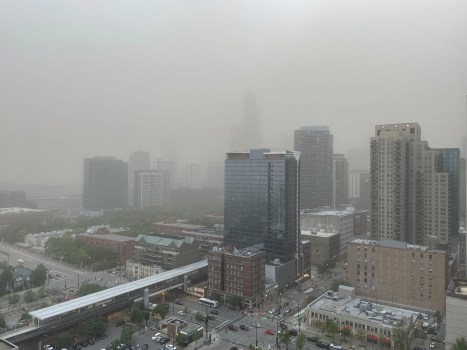Understanding High Wind Warnings: What Chicago’s Recent Dust Storm Teaches Us
Residents in Chicago experienced a rare event this May—a dust storm strong enough to prompt the city's first-ever high wind warning for such conditions. As severe wind events become more frequent, understanding what a high wind warning means and how to respond is more important than ever.

What Does a High Wind Warning Mean?
A high wind warning is issued when sustained winds of 40 mph or stronger are expected, or gusts reach 58 mph or more. These warnings alert residents to dangerous conditions that can cause property damage, travel hazards, and, in rare cases, significant events like dust storms. When a high wind warning is in effect, it is crucial to secure loose objects, limit outdoor travel, and stay updated with local weather advisories.
The May 2025 Chicago Dust Storm: A First in City History
On May 16, 2025, Chicagoans witnessed a dust storm that many compared to events described in classic literature. According to the Chicago Tribune editorial, the skies over the city darkened dramatically, and visibility plummeted as winds accelerated dust into the urban core. This sudden, severe event resulted in delayed flights, difficult driving conditions, and even caused outdoor celebrations to be disrupted.
The National Weather Service stated that this was the first dust storm warning ever issued for Chicago. Severe winds, reaching up to 70 mph, moved northward from central Illinois, picking up dust from recently tilled, dry farmland and carrying it directly into the city. For many residents, it was a vivid reminder of rare but impactful weather phenomena.
Why Did This High Wind Event Unfold?
Meteorologists explained that a severe thunderstorm south of Chicago triggered powerful outflow winds. These winds traveled rapidly over dry fields, picking up large amounts of dust and reducing visibility to a quarter mile in some neighborhoods. As highlighted by NBC Chicago, the elements combined were unusually dry soil, unprotected farmland, and broad, flat spaces that allowed wind to build strength quickly.
Typically, Illinois does not experience dust storms of this scale, and even rarer is the extension of such a warning into downtown Chicago. The last comparable event dated back as far as 1934, underscoring just how remarkable this high wind warning was for the city's residents and infrastructure.
Safety Tips for High Wind Warnings
If you ever find yourself under a high wind warning, it is important to remember these steps:
- Secure outdoor furniture, trash bins, and other items that could become projectiles.
- Postpone travel if possible, especially in areas prone to dust or debris.
- Stay indoors and away from windows during peak wind conditions.
- Listen to official weather reports for the most up-to-date information.
For more safety advice and local updates, check coverage from ABC7 Chicago, which also documents how severe weather toppled trees and power lines during these storms.
Lessons from an Unprecedented Weather Event
Chicago’s recent experience shows that even cities unaccustomed to extreme wind and dust can face these hazards. Pay attention to high wind warnings when they’re issued, and take simple, effective steps to keep your family and property safe. For many, Chicago's dust storm was a wake-up call—one that highlights the growing importance of understanding severe weather alerts in our daily lives.
Staying informed and prepared can make all the difference the next time a high wind warning is announced.